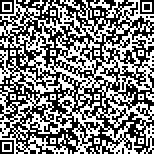下载中心
优秀审稿专家
优秀论文
相关链接
摘要

地表实际蒸散发是联系陆表水循环、能量平衡和碳收支等物理过程的重要生态水文变量,同时也是目前水循环研究中的薄弱点,定量化土壤水分对蒸散发的胁迫作用是估算地表蒸散发的一个关键过程和难点。本研究基于2018年9月闪电河流域水循环与能量平衡遥感综合试验星—机—地联合观测数据,采用机载观测和卫星遥感反演土壤水分输入到ETMonitor模型估算地表实际蒸散发,在时间和空间两个维度上评估不同土壤水分产品对蒸散发估算的影响。从时间变化上来说,与地面观测蒸散发时间序列相比,基于ESA CCI (European Space Agency Climate Change Initiative)融合土壤水分产品、SMAP (Soil Moisture Active and Passive)土壤水分产品和国产风云三号气象卫星(FY-3C)土壤水分产品估算的蒸散发最接近地面站点观测蒸散发,而基于ASCAT(The Advanced Scatterometer)和SMOS (Soil Moisture Ocean Salinity) 土壤水分估算蒸散发分别明显的高于和低于地面观测蒸散发。从空间分布上来说,利用卫星反演土壤水分估算的蒸散发与基于机载观测土壤水分估算蒸散发具有一致的空间分布,能较好地反映该区域地表蒸散的空间分布格局,其中基于SMAP和SMOS土壤水分估算蒸散发与基于机载观测土壤水分估算蒸散发空间一致性最好。本研究评估遥感反演土壤水分对蒸散发影响,对区域及全球遥感蒸散发估算和土壤水分产品评估具有一定的指导意义。
The actual EvapoTranspiration (ET) is an important ecohydrological process that links the land surface water cycle, energy balance, and carbon budget, and it remains as one of the most uncertainty process in the global water cycle research. One key point to obtain accurate ET is soil water stress, which is also one of the most difficult points. Hence, the current study is proposed to study the impact of soil moisture on the ET estimation, considering the large uncertainty of satellite remote sensing soil moisture products.In the current study, six satellite remote sensing soil moisture products were collected and downscaled to 1 km resolution, including SMAP (Soil Moisture Active and Passive), SMOS (Soil Moisture Ocean Salinity), ASCAT (The Advanced Scatterometer), FY-3B and FY-3C (Chinese Feng Yun satellite 3 B and 3 C), and ESA CCI (European Space Agency Climate Change Initiative). All soil moisture data were input to ETMonitor algorithm to obtain the corresponding ET estimation. The ETMonitor model has been proven to be able to generate accurate regional and global ET estimation, and the surface soil moisture data derived by microwave remote sensing is set as an important input for the ETMonitor model to estimate the surface resistance to account the constraining of soil moisture on ET. Meanwhile, to validate the satellite remote sensing soil moisture and corresponding ET estimation, we collected the ground observation-based ET and soil moisture data and the airborne observation-based soil moisture in September of 2018 based on the Comprehensive Remote Sensing Experiment of Water Cycle and Energy Balance in the Shandian River Basin. The daily observed ET is calculated by the 30-min latent heat flux obtained by an installed close-path eddy covariance system.The satellite remote sensing soil moisture and ET time series were compared with the ground observation during September 2018 to illustrate their accuracy to reflect their temporal variations. It’s found that the Chinese FY-3C soil moisture data shows the highest correlation with the ground observation, while SMAP soil moisture data shows the lowest root mean square error with the ground observation. The ASCAT data overestimates the soil moisture significantly, while SMOS underestimates the soil moisture. Hence, the ET estimated based on ASCAT soil moisture data also overestimates ET significantly, and ET estimated based on SMOS tend to underestimate ET. It’s also noted that ET estimated based on Chinese FY-3C soil moisture, ESA CCI combined soil moisture, and SMAP soil moisture show the highest correlation and lowest root mean square error when comparing with ground observation. While the accuracies of ET estimated based on SMOS and ASCAT soil moisture products are lower based on their relatively large bias. The error of soil moisture is not linearly propagated to estimated ET. When the soil moisture is higher, e.g. higher than the field capacity, soil moisture does not stress the ET progress anymore, and the overestimation of soil moisture will not be propagated to the estimated ET.The spatial variations of satellite remote sensing soil moisture after downscaling were compared with the airborne soil moisture, and general good correlation could be found among them. And ET estimated based on SMAP showed the highest correlation with ET estimated based on airborne soil moisture. Generally, all the satellite remote sensing soil moisture products are higher than the airborne soil moisture except SMOS, which is lower than the airborne soil moisture when soil moisture is high. Hence the ET values estimated based on satellite remote sensing soil moisture products are also higher than the ET estimated based on airborne soil moisture expect for the ET estimated based on SMOS.Overall, the current study contributed to assess the uncertainty of satellite remote sensing soil moisture products and how it is propagated to the estimated ET. And it could also guide to obtain accurate regional and global ET products.

